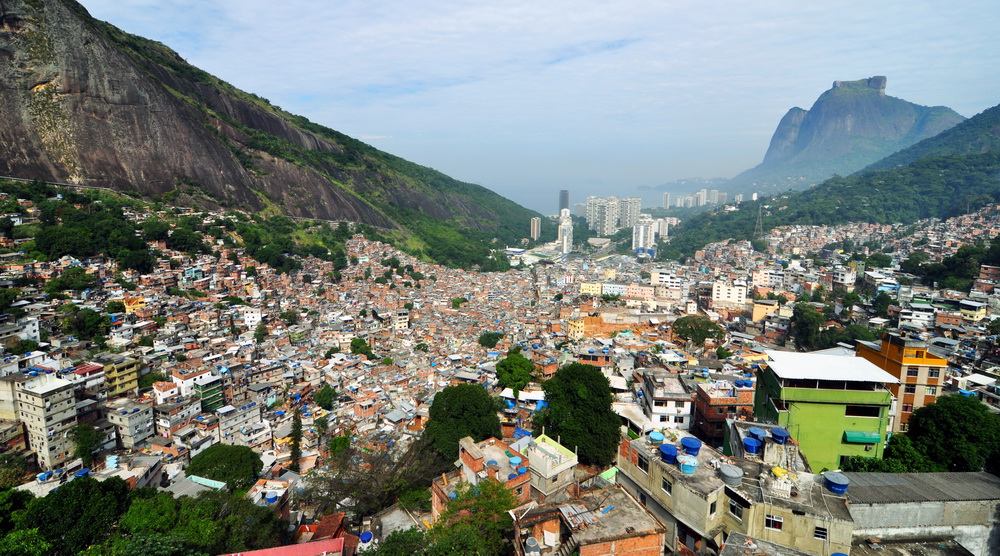Rio de Janeiro has recently taken considerable initiative to better adapt to climate change and to make favelas more resilient. Yet, the positive effects have been limited. It is time to realize that the key to achieving true resilience lies within communities themselves.
Politheor’s Special Report RIO 2016: Perspectives beyond the mega event
Rio de Janeiro has been identified as “the city most affected by climate change in South America.” Sea level rise is predicted to submerge Rio even if the Earth’s temperature rises only by 1.5°C (the new global goal following the 2015 Paris agreement). Torrential rains have already resulted in major disasters in the last decade, destroying people’s homes and lives that aren’t always possible to rebuild. Climate-related events will continue to affect urban metropolises such as Rio, costing cities considerable resources and further widening the social inequality gap.
It is crucial for countries and cities facing the biggest climate-related risks to invest into resilience or those feeling most of the heat will be those with the least resources to adapt, such as favela residents. Rio’s favelas have been praised for being a new model of urban sustainability as they are organically developed, high density, mixed-use neighborhoods with a strong sense of community and leadership. Yet, their often-hazardous location on hillsides, poor storm water management system, and lower average income also increases their vulnerability to climate-related hazards like landslides.
On a national level, Brazil has made significant commitments to adapt to climate change – at least verbally. It is the first country to have fully complied with the Compact of Mayors initiative. In their Second national communication to UNFCCC, key adaptation measures for urban areas included the following recommendations: “offering housing alternatives to low-income populations that are currently living in areas of risk” and “development and implementation of urban design plans with focus on urban and environmental comfort.” However, talking is not enough – it is time to deliver.
On a local level, the city of Rio de Janeiro has initiated several climate adaptation projects aiming especially at favela residents. But so far, community priorities have largely been ignored, projects are years behind schedule, and many families located in the unfortunate proximity to the 2016 Olympic Games sites were forcefully displaced.
One of Rio’s recent projects is the soon-to-be Olympic Village, called Ihla Pura (the pure island), and it was supposed to be a sustainability super star. But it not only ignores most social sustainability criteria, the project even contributed to the evictions from Vila Autodromo – a favela that got the muddiest end of the stick. So even though Ihla Pura is the first project in Brazil to receive the LEED-ND accreditation, when a project barely passes with a score of only 47 out of 110, I question how sustainable it actually is. And when I learn that it received ZERO credits for community outreach, mixed-income diverse communities, mixed-use neighborhood centers, and storm water management, I wonder if even one of Rio’s residents was included in the Ihla Pura project. It is clear that the project had no direct positive impact on the local community, but what’s worse is that it already had a serious negative impact and that it might have contributed to increased vulnerability of certain families, simply because favela residents did not have a say.
The Morar Carioca initiative is another classic example of Rio’s promise to strengthen the resilience of favela residents, without any substantial results. Similarly to Ihla Pura, Morar Carioca was praised for its sustainability features, winning the 2013 C40 & Siemens Climate Leadership Sustainable Communities award. It was supposed to be the ultimate legacy of the 2016 Olympic Games. So what does this legacy look like so far? It is hard to tell, as countless projects planned never even started.
Climate change adaptation cannot only be a top-down, far-removed process that is entirely designed and managed by donors. For adaptation to be truly successful, people have to lead the way based on their self-identified needs and individual strengths. Community leadership is key as it can ensure citizen priorities are addressed during policy development, but also implementation. If authorities are not held accountable for their actions – or inactions – projects like a storm water management system will be promised but will never materialize.
Strong leadership is already present in many favelas and has proven to be a powerful force for driving climate change adaptation projects, such as the Sewage biosystem project of Favela Vale Encantado and the LEED-UP initiative.
Adaptation also requires a more coordinated and larger scale response, but citizens still play a crucial role. Rio’s state-of-the-art Operations Centre and partnership with NASA for better monitoring and management of environmental hazards will certainly make the city as a whole more resilient. And such projects are beyond the capacity of communities to design and manage. Yet, by monitoring project finances, demanding transparency, and holding the government accountable for mismanagement, people can ensure that their needs are met. And because it affects people’s future directly, people will care, and people will do everything they can to assure the best possible future for themselves and their communities.
By supporting citizens to develop tools that will allow them to monitor and track government spending on adaptation projects, ensuring accountability, and focusing on context-based approaches, with context-based solutions, resilience can become a reality. Governments need to keep this in mind to ensure that UNFCCC and national processes are enforced at the local level.
More powerful favelas will be more resilient favelas. Rio’s infamous neighborhoods are best positioned to ensure a bright future for the next generations of their inhabitants.














Leave a Comment
Your email address will not be published. Required fields are marked with *